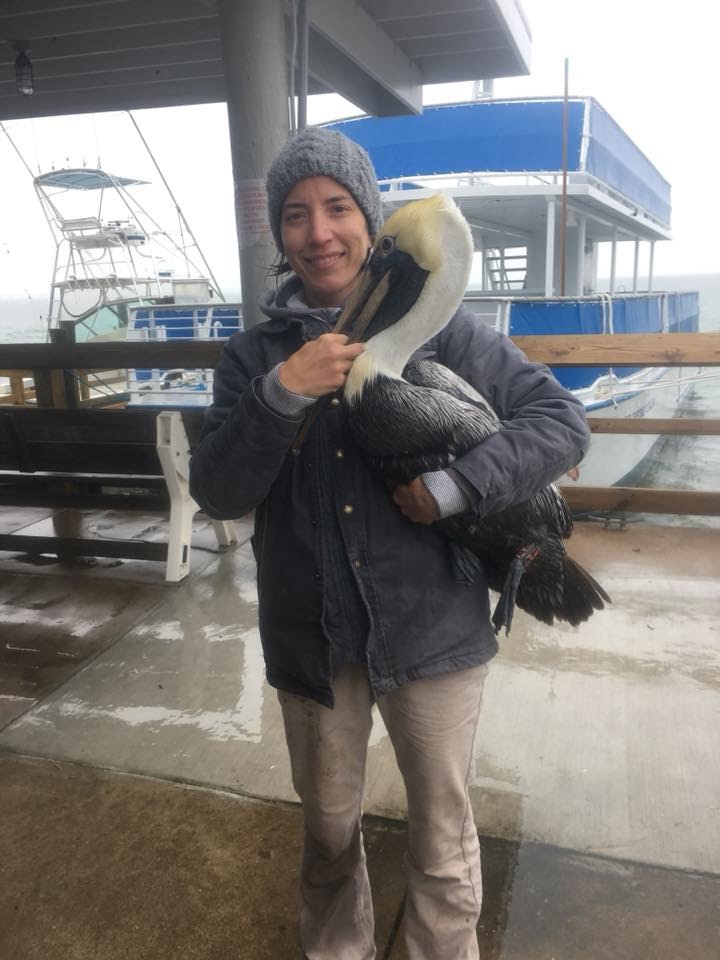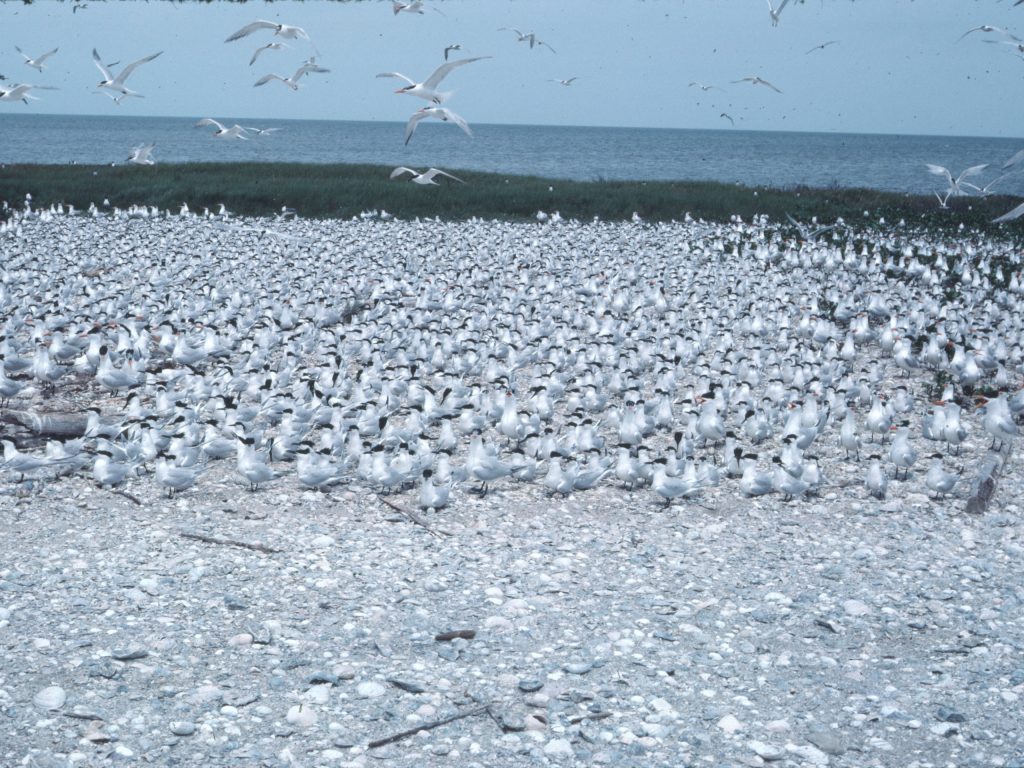GoMAMN Newsletter: Issue 9
Greetings from the GoMAMN Coordination Committee! This is the ninth issue of the GoMAMN newsletter, which is distributed on a quarterly basis. The purpose of this newsletter is to share information about the Network and ongoing monitoring projects, along with news and opportunities relevant to our work as we collectively strive to advance bird conservation along the Gulf of Mexico.
Team Member Spotlight: Lianne Koczur

What is your job, what do you work on, and what is your involvement with GoMAMN?
I am the Science & Conservation Director at Alabama Audubon. I work on a variety of conservation programs throughout the state, with a lot of my time focused on the Alabama Coastal Bird Stewardship Program (supported by the Alabama Department of Conservation and Natural Resources, and the National Audubon Society). Our coastal staff monitors and protects coastal breeding birds and conducts surveys year round. I am also working on developing statewide citizen science projects and assisting with habitat restoration efforts in Birmingham. I’ve been involved with GoMAMN for about 1 year and I am co-chair of the wading birds group with Dr. Clay Green.
Monitoring Project Spotlight: Audubon Coastal Bird Survey
Jessica Schulz and Erik Johnson

Originally established by the National Audubon Society in response to the 2010’s Deepwater Horizon BP oil spill, the Audubon Coastal Bird Survey (ACBS) continues to help conservation planners assess threats and identify target species experiencing population declines. ACBS provides baseline data from TX to AL, which allows for the comparison of population trends and relative abundance for priority coastal bird species that serve as bioindicators of coastal ecosystem health. The survey also allows for understanding the impacts of human-induced threats and natural disturbances such as hurricanes, flooding, or storm surge.
Paper Highlight: Detection probabilities of beached bird carcasses along sandy beaches and marsh edges along the northern Gulf of Mexico by G.S. Zimmerman, V. W. Varela, and J.L. Yee
Key Takeaway points:
Researchers examined detection probabilities of bird carcasses along sandy beaches and marsh edges at study sites located from Sabine Pass, Texas, to Panama City, Florida to inform bird mortality models associated with the Deepwater Horizon spill.
Factors that may influence detection were explored, including carcass size and condition, location on the beach, and distance from water’s edge into the marsh.
Detection rates on sandy beaches ranged from 0.82 (SE = 0.09) to 0.93 (SE = 0.04). Carcass condition influenced detection rates, with relatively intact carcasses easier to detect than those with simulated scavenging or decomposition damage.
Detection rates in marsh edges ranged from 0.04 (SE = 0.04) to 0.86 (SE = 0.10). Carcass size influenced detection rates, and carcasses of all sizes were generally harder to detect in Spartina- marshes versus Phragmites-dominated marshes.
The authors suggest that, if feasible, biologists should test detection probabilities under local conditions when implementing beached bird monitoring programs.

2021 GoMAMN Community of Practice Meeting Summary
Over 100 participants representing more than 40 private, academic, state, and federal organizations attended the 2021 Gulf of Mexico Avian Monitoring Network (GoMAMN) virtual Community of Practice (CoP) meeting this past October. The meeting included general group and breakout sessions. General session topics included:
- The history, structure and function of GoMAMN
- An overview of GoMAMN’s 2019 Strategic Bird Monitoring Guidelines for the Northern Gulf of Mexico
- Current coordinated regional bird monitoring and restoration efforts
- An update on GoMAMN’s avian monitoring gap analysis project
- A discussion of how GoMAMN Coordination Committee and the guild- and topic-specific Working Groups can interact to move Working Group priorities forward over the next 1-3 years
- A discussion of mentoring needs and opportunities
- Communications planning
General sessions were recorded and are available here.
There were a series of concurrent sessions hosted by GoMAMN guild- and topic-specific Working Group Chairs. Synopses of the sessions for some of the Working Groups are provided below.
News
Florida Trustees initiate planning for fourth phase of coastal access project
Gulf Coast Ecosystem Restoration Council approves fiscal year 2021 annual report to Congress
Mississippi Trustee Implementation Group welcomes public’s project ideas
Texas Trustee Implementation Group releases second draft restoration plan
Events
Association of Southeastern Biologists
March 30 – April 2, 2022 in Little Rock, AR
Mississippi Academy of Sciences Annual Meeting
March 31 – April 1, 2022 in Biloxi, MS
April 25 – 28, 2022 in Baton Rouge, LA
2022 Ornithological Conference
June 27 – July 2, 2022 in San Juan, PR
July 18 – 19, 2022 in Boston, MA
Opportunities
NOAA RESTORE Science Program Funding Opportunity: Executing Actionable Science
Full announcement expected in June 2022
North American Wetland Conservation Act grants
Next proposal deadline July 8, 2022
